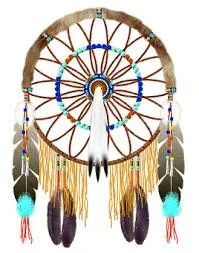Counseling and Its Relationship With the Dreamcatcher
Dream Catchers are among the most recognizable Native American symbols in the country today. For many Native American peoples, they represent a tradition. There is something sacred about them. They represent legends, the very fabric of a culture that has been handed down for generations. By learning the meanings behind these beautiful, woven circles, you can gain a deeper appreciation of the craft and the beliefs behind their creation. They may even provide some meaning to your own life as they have for many, outside the traditional Native-American world.
Native People believed in a mythical spider woman that would visit the sleeping newly born infants and spin a web for their protection. Over time, it became impossible for her to visit all infants, leaving the women of the tribe to make the dreamcatcher to protect their newborns. For this reason, some tribes fashion their dreamcatchers with eight points to represent the eight legs of Spiderwoman. Eventually, Dreamcatchers began to be created with a more colorful design to keep babies entertained while they rested in their sleeping places. It was believed that the Dreamcatcher would keep away bad dreams and let only the good ones enter. Here, you will find a beautiful animation that depicts the sweetness of "dreamcatching" for you.
According to legend, dreams that humans have while sleeping, are sent by sacred Spirits (called "Dreamweavers" by some) as messages. In the center of the Dreamcatcher there is a hole. According to those legends, good dreams are permitted to reach the sleeper through this hole in the web. As for the bad dreams, the web traps them and they disappear at dawn with the first light.
Another version would have it that the top portion, the web of the Dreamcatcher was said to catch the bad spirits and dreams of the newborn while they slept. As the dream moved down the web, the negative energy would get trapped in the web leaving nothing but positive thoughts to drip down the feathers onto the child.
In some Medicine traditions, the Medicine Person, or 'Shaman' tries to determine what messages are being past onto them by the Spirits and what the message represents. The interpretations are used by the receiver much like ceremonial visions are: as guides in how to live a better, more harmonious life. Can you see the connection to counseling?
It is said that memory is really "imagination caught in past time” -- much like dreams. And memory, much like last night’s dream, much like dreams and visions that we’ve had of how we would like our life to be, linger and remain influential in our lives -- almost like the mythic Spirits of legend who try to send their messages in dreams. In therapy, stories are told...historical stories out of memory, and stories lived in waking, daily life. A web is woven -- a web of a sacred life that is transformative. If these stories are told properly, with respect, and the messages interpreted as intended, the negative energy of the bad dream becomes trapped in the web, leaving only the positive to remain and empower you. That’s healing isn’t it? We literally become the Dreamcatcher -- the "Dreamweaver." Mitakuye Oyasin: I say these things not only for myself, but for "All My Relations."
More about the symbology of Dreamcatchers
It is believed that the dreamcatcher originated from the Anishinabe people, also known as the Chippewa tribe in America and the Ojibwa tribe in Canada. Others, like the Lakhota people, have their own version as well. Although there are many variations, a dreamcatcher is basically a small circle of wood that is tied with sinew or thread to resemble a spider’s web with a small hole in the middle. The strings or sinews are tied at several points on the circle, with the number of points on the dreamcatcher having different meanings, depending on the tribe.
13 points – the 13 phases of the moon
8 points – the number of legs on the spider woman of a dreamcatcher legend
7 points – the seven prophecies of the Grandfathers
6 points – an eagle or courage
5 points – the star
A dreamcatcher can also have a feather tied to the bottom and beads or animal totems hanging on the strands. Traditional dreamcatchers are only a few inches in diameter, but you will see contemporary models anywhere from a few inches to 1 foot across.
All decorations and materials used to decorate DreamCatchers, have a special meaning, again depending on the tribe. A single bead in the middle may represent the spider (who also has a particular meaning) that is on the web. Scattered beads throughout the web may represent bad dreams that may have been caught throughout the night. A feather represents can be a symbol of the breath of the Creator -- air, so it may hang from the center of the ring. Breath is essential for life. A baby watching the air playing with the feather on her cradleboard was entertained while also being given a lesson on the importance of the good air given by the Creator.
While gem stones, were not used traditionally, some DreamCatchers may incorporate four gem stones: Red, White, Black or Blue, and Yellow and are used to represent the four directions. Nature expresses a spiritual inspiration in each.
Learning about this beautiful tradition by which "The People" have lived in beauty for thousands of years, may have inspired you to make your own DreamCatcher. So I would invite you take a look at this easy to follow instructional video for you to Create Your Own DreamCatcher. Ho! Hetchatu yelo ("what I say here is True.").
In the Lansing, Michigan area, please feel free to email or call me with any questions or comments at the address below. Pilamaya yelo, "thank you."
